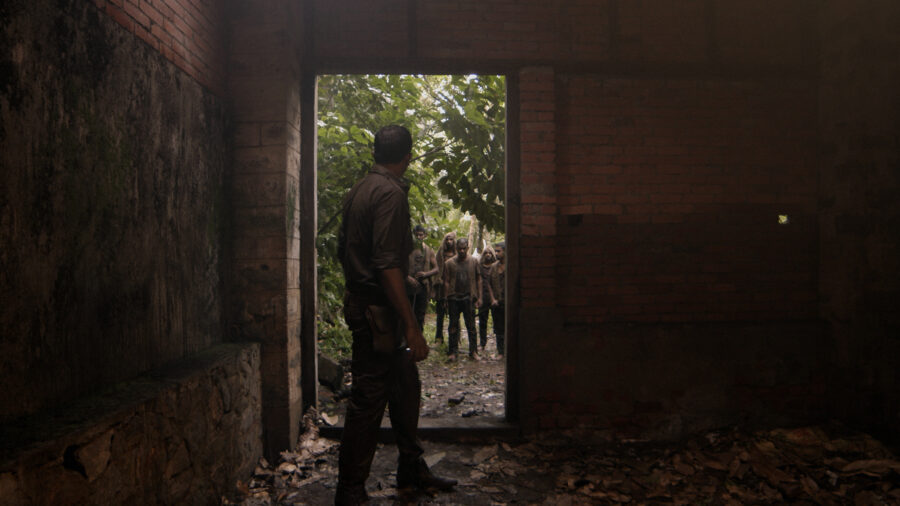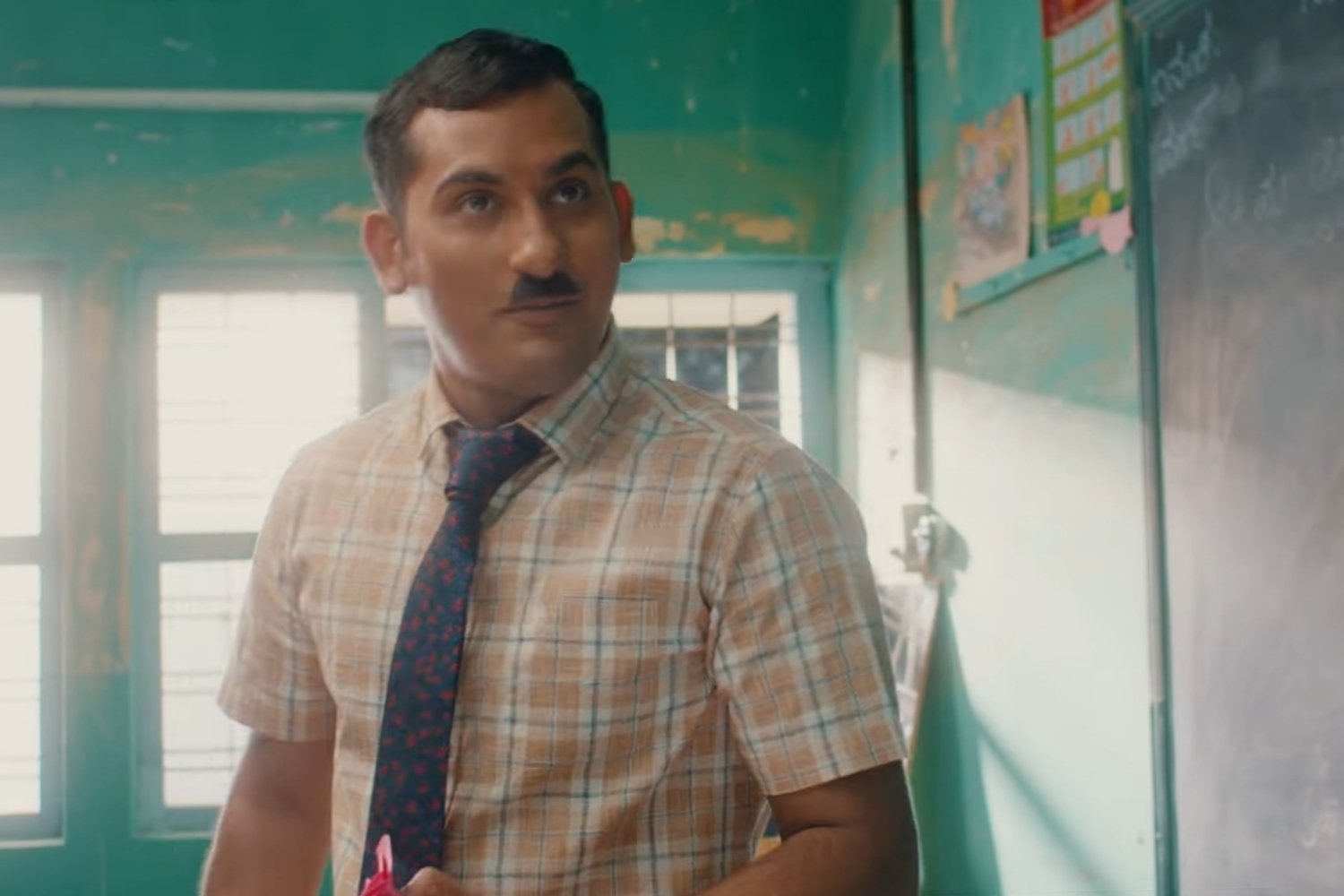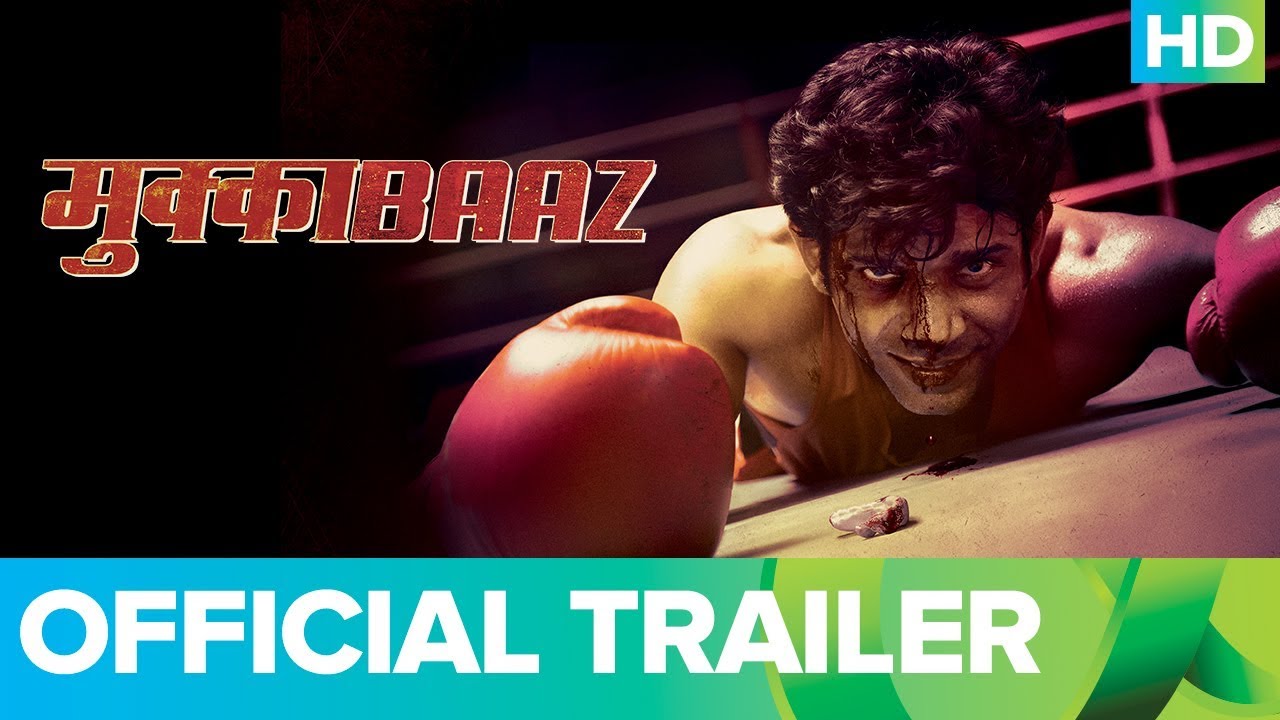In the middle of a rubber estate that spans ten thousand acres stands a house, the venue of chaos and curious occurrences in Krishnendu Kalesh’s Hawk’s Muffin, a Malayalam film that premiered in the Bright Future section of the International Film Festival of Rotterdam (IFFR) on Wednesday.
The Malayalam title of the film is Prappeda – a hen, the hawk’s food. The word is polygonal; it could also mean, the final twitch of a dove. The end of innocence. This latitude of the title mirrors the film’s abstract form. At once, it is about past, present and future. It is narrative and non-narrative; an experimental science-fiction film that, at times, has the texture of a video game or a fairy tale. It is well-removed from the standard aesthetic approaches in Malayalam cinema, placing itself on the expanding margins of Indian art house cinema.
Hawk’s Muffin, set in a post-pandemic dystopian future, creates a unique, modern and precise language to talk about universal themes – fascism, the steep economic inequality, the global refugee crisis, land encroachments and gender relations. It is also an ode to cinema, both the labyrinthine contemporary form of the medium, as well as its fascinating origin.
The film is the debut directorial of Krishnendu, who won the FEFKA award for the best director in 2017 for his short film, Karinchathan. It was conceived and shot in early 2020, when Kerala was in the initial stages of the Covid-19 lockdown. The 20-member crew, camping deep inside a sprawling rubber estate in central Kerala, completed the filming in 18 days.
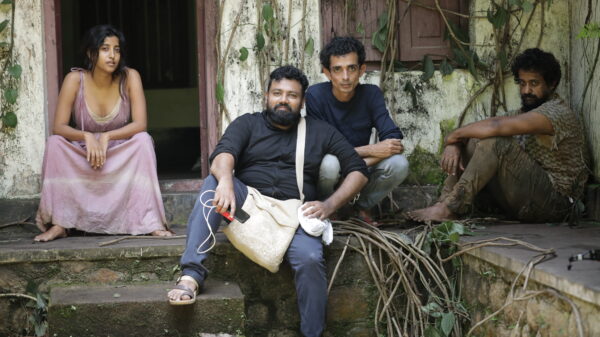
The filmmaker, who holds a degree in media production and graphic design, dedicates Hawk’s Muffin to four auteurs: Georges Méliès, for transforming “the elitist visual medium that Lumiere Brothers created into a carnival for the masses,” Hayao Miyazaki and Guillermo del Toro, “for the dogged anti-war sentiments in their films,” and Andrei Tarkovsky, “for turning cinema into a place of poetry.”
“While watching the finished film, I realised their work had so much influence, unconscious than conscious, on me as a filmmaker. Without Méliès, for instance, cinema would not have been the magical art form that it now is,” says Krishnendu.
At its core, Hawk’s Muffin is an anti-war film, the ideology foregrounded in a turtle who has lived long enough to see the great wars and to learn their historical patterns, whose presence in the film’s house launches a series of micro-events that lead to the end of everything.
The men in the film are rugged and violent, hungry for dominance over land and women. Now and then, the film steps back a little to laugh at them. The film’s pivotal point is the coming of a formless stranger (Rajesh Madhavan), a tender being – an artist – into this fascist space. The thing opens to Ruby (Ketaki Narayan), the sole heir to the estate, a door to art and endless freedom. However, could a girl who grew up like an animal on a farm, aspire for a free life?
The war in Hawk’s Muffin is waged against the environment, too. Just a stone’s throw away from Ruby’s tranquil and terrifying estate, heavy machines drill into the earth.
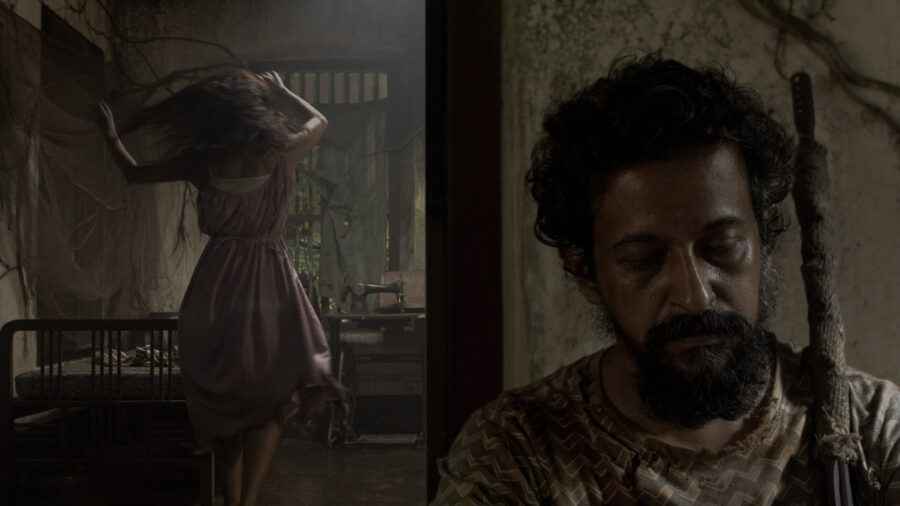
“I developed the film’s idea before the vaccines were developed, when conspiracy theories about Covid-19 were rife on the internet. The pandemic helped nations to gain great control over civilians and the flow of information in an unprecedented fashion. It was a great opportunity for the oppressive state,” says Krishnendu.
He adds, “War is an institutional product. The enemy and the hatred are not organic but manufactured. I think the next great war will not be waged on a physical battle space but virtually, within the bounds of a consumerist society. The rising economic disparity across the globe, the refugee crisis and the mediation of religion will accelerate its beginning. In Hawk’s Muffin, I imagine such a war, futuristic and more destructive than ever.”
There was no conventional script in the film’s production stage, only a detailed outline of the concept. The actors, especially Ketaki, who travelled to Kerala during the pandemic, assisted the filmmaker in designing the characters. “The narrative was improvised and revised throughout the process, even in the post-production stage. This style of filmmaking was a consequence of the circumstances. We were shooting under a lot of limitations,” says the filmmaker.
Recommended
The dystopia in the film comes alive through extensive sound and visual effects. They are seamlessly blended into the narrative to create an unreal, dreamy landscape. Thoufeek Hussain, a freelance artist, created the VFX single-handedly, working from his room in Fort Kochi. “The turtle, the film’s anchor, was conceived and created entirely at his table. It was one of the last-minute decisions we made.”
Does the filmmaker worry that the confluence of a variety of thematic elements would make the film inaccessible to a regular viewer? “I don’t believe every member of the audience should access every underlying theme,” says Krishnendu. “Set aside the symbols and underlying themes, Hawk’s Muffin is a fantasy tale about a young girl imprisoned in an arid hyper-masculine terrain, a universally accessible story.”
Hawk’s Muffin is scheduled to have its Indian premiere at the 26th edition of the International Film Festival Of Kerala (IFFK).
